| | Daffodils How to Plant, Grow, and Care for Daffodils | | | Nothing heralds spring like the cheerful daffodil! Just pop these bulbs into the ground in fall and sunshine-yellow flowers emerge at winter’s end to lift our spirits! Plus, daffodils are the deer- and rodent-resistant bulbs (unlike tulips)! Learn more about how and when to plant daffodils—and the delightful variety of choices from the classic yellow variety to mini daffodils. |
| 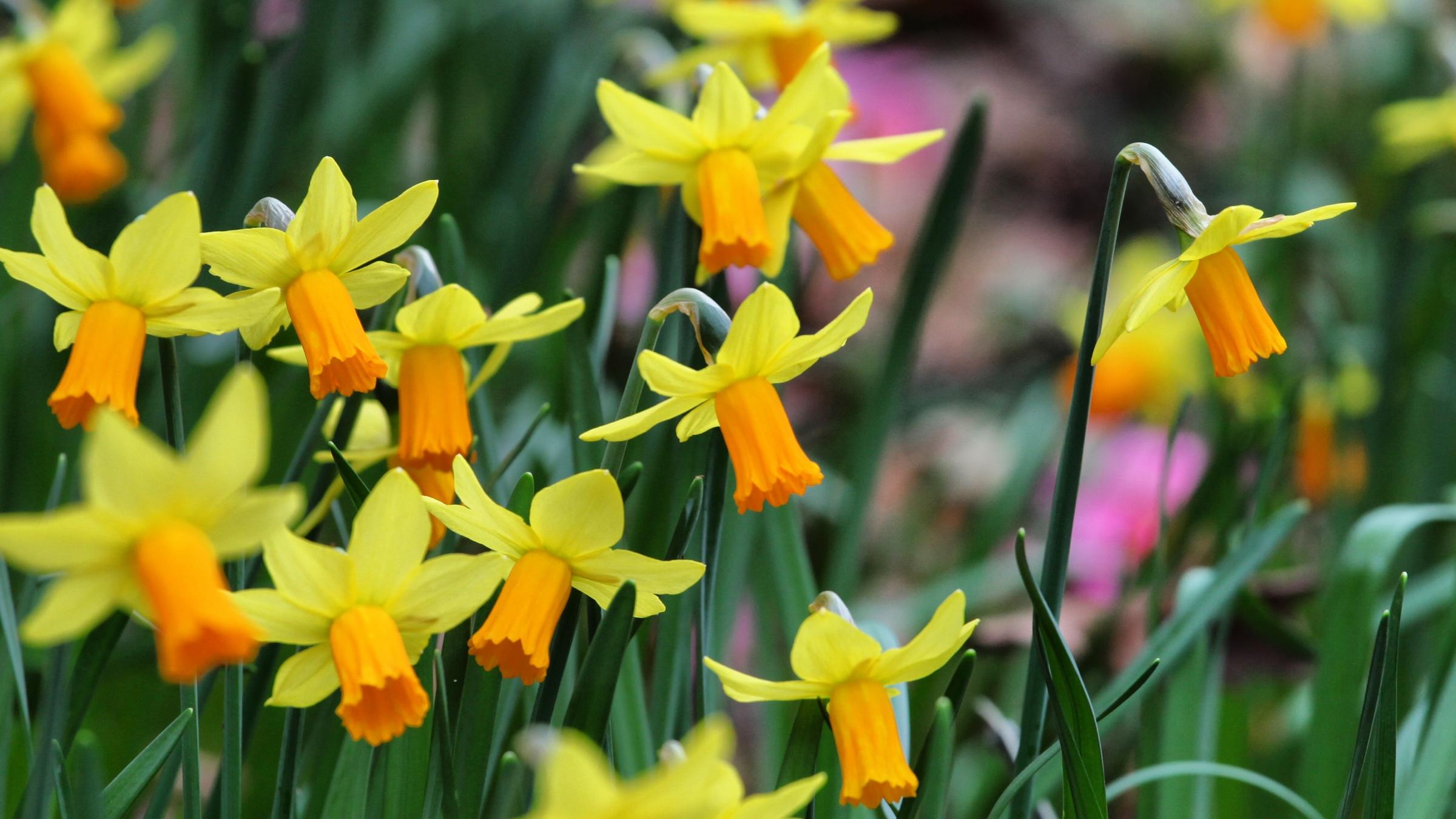 | | About Daffodils Daffodils are a hardy perennials that come back year after year, spreading and often naturalizing. They are a fall-planted bulb usually planted in October and the flowers bloom in late winter or early spring. (They are the March birth flower, after all!) Most daffodils grow easily in most regions of North America, except in the hottest, wettest areas, such as South Florida. There are thousands of daffodil varieties. The traditional daffodil flower may be a showy yellow or white, with six petals and a trumpet-shape central corona, but many cultivated varieties (“cultivars”) exist today if you fancy experimenting with a more exotic double, frilled or bicolor narcissus. Daffodils are suitable for planting between shrubs, in a border, or even in pots. We especially love daffodils in a woodland garden and in large groves. You’ll find that many gardeners plant the bulbs not just by the dozens but by the hundreds! Daffodil flowers can also be forced inside to add cheer to the winter months, and they make for great springtime cut flowers. | | Choosing Daffodil Bulbs Select high-quality daffodil bulbs that have not been dried out. The larger the bulb, the better. DutchGrown™ bulbs are of the highest quality, ensuring optimum performance. You probably haven’t seen daffodils bigger than their top-sized daffodils bulbs. See where to buy daffodils bulbs. | | When to Plant Daffodils | | Choosing and Preparing a Planting Site - Daffodils do best in full fun, though they will grow in partial shade.
- They’re generally not picky about soil, but DRAINAGE is key. They are susceptible to rot when kept too wet, so make sure that you plant them in a well-draining spot.
- Hillsides and raised beds work well. Otherwise, improve clay soil by amending (12 inches deep) with organic material such as well-rotted compost.
- Slightly acidic soil is preferred, so you might add soil sulfur if you have alkaline soil.
| | How to Plant Daffodils - Plant the bulb with the top (pointy end) set about 2 to 3 times as deep as the bulb is tall. For example, the top of a 2-inch bulb should be about 4 inches in the ground, while a 3-inch bulb should be planted 5 to 6 inches deep.
- Where winters are severe, make sure there are at least 3 inches of soil covering the bulb.
- Daffodils will tolerate some crowding, but they prefer to be spaced about 3 to 6 inches apart.
- It may help to sprinkle a little bulb fertilizer in the hole during planting. Learn more about preparing soil for planting.
- Resist the temptation to uncover spring-flowering plants such as daffodils and tulips. You can loosen mulch, but the shoots will still benefit from protection against cold, drying winds in early spring.
- Daffodils contain something called oxalic acid—a substance that makes them unpalatable to most rodent pests. However, if yours are being bothered, consider adding sharp sharp pieces of shells or a pelleted rodent deterrent into and around each planting hole.
| | How to Grow Daffodils - Apply a low-nitrogen, high-potash (potassium) fertilizer after flowering if bulbs are not performing as desired. Learn more about preparing soil for planting and soil amendments.
- Water late-flowering daffodils in dry spring weather (flowers may abort in dry conditions).
- Deadhead plants as flowers fade (for neater garden appearance) and allow leaves to remain for at least 6 weeks.
- Lift and divide the clumps when flowering becomes sparse or the clumps congested.
- After daffodils bloom in the spring, allow the plants to grow until they die off. Do NOT cut down earlier. They need time after blooming to store energy in the bulbs for next year’s bloom.
- To remove the dead plants, either snip them off at the base, or twist the leaves while pulling lightly.
- If your daffodils are growing in grassy areas, you can cut the long grass once they’ve died back without affecting their display next year. Be sure to remove all debris so it won’t enrich the grass itself at the expense of next year’s flower display.
- Once daffodils and tulips have gone by, add bonemeal to the soil for next year’s blooms.
| | Recommended Varieties According to the American Daffodil Society, there are 13 official daffodil flower types and more than 25,000 named cultivars! Whatever variety you choose, the most important tip is: Get the best quality bulbs for the best flowers. The bigger the bulbs, the better. Look for top-size bulbs, the biggest bulbs on the market. - ‘Dutch Master’ is the classic daffodil—big and yellow with a very large cup and oversize trumpets. They bloom early, naturalize easily, and are great for planting in masses.
| 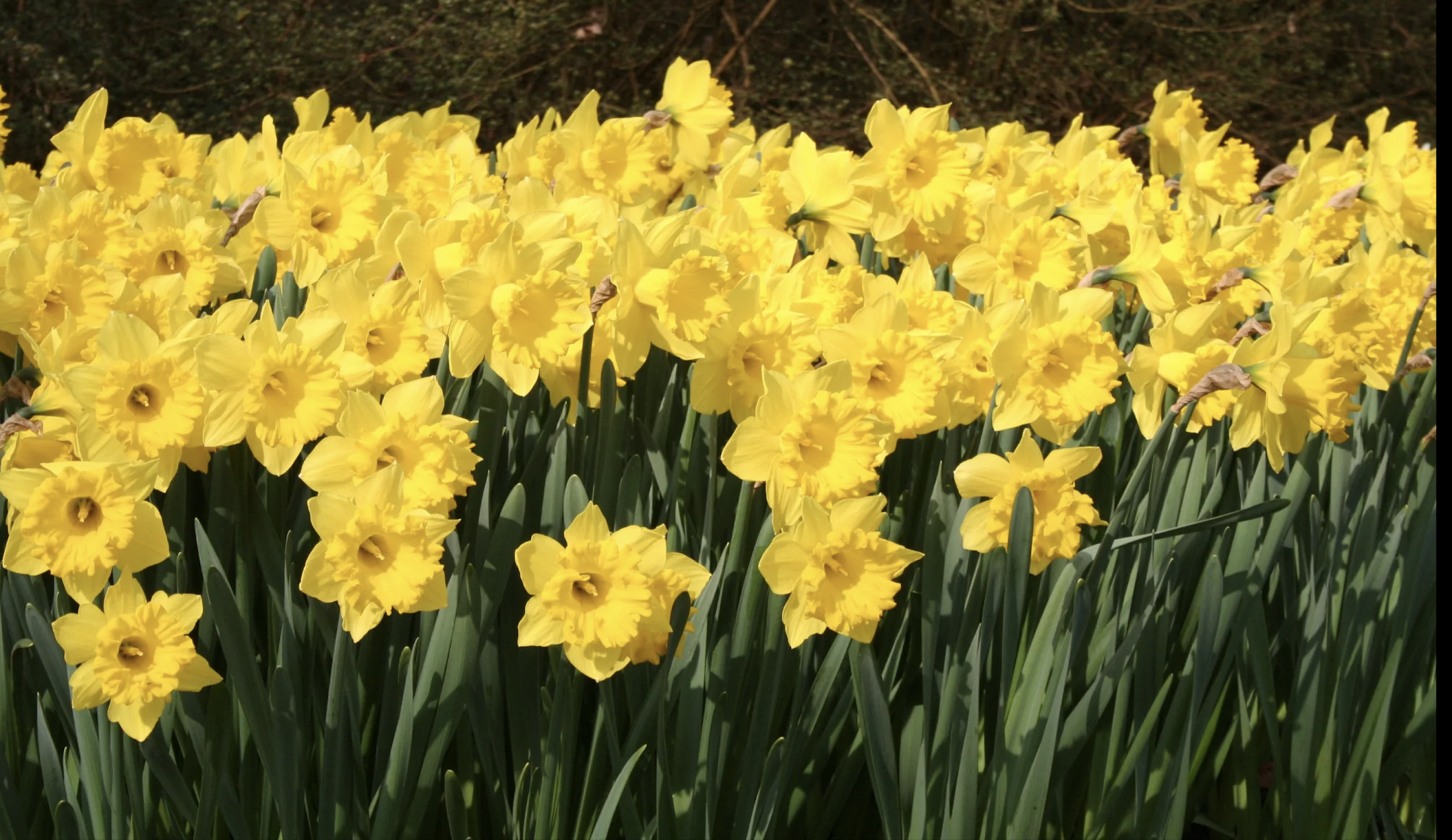 | - ‘Barrett Browning’ is the recognizable pure white daffodil with bright orange trumpet surrounded by a golden halo. They bloom early, naturalize easily, and do well in warmer climates, too.
| 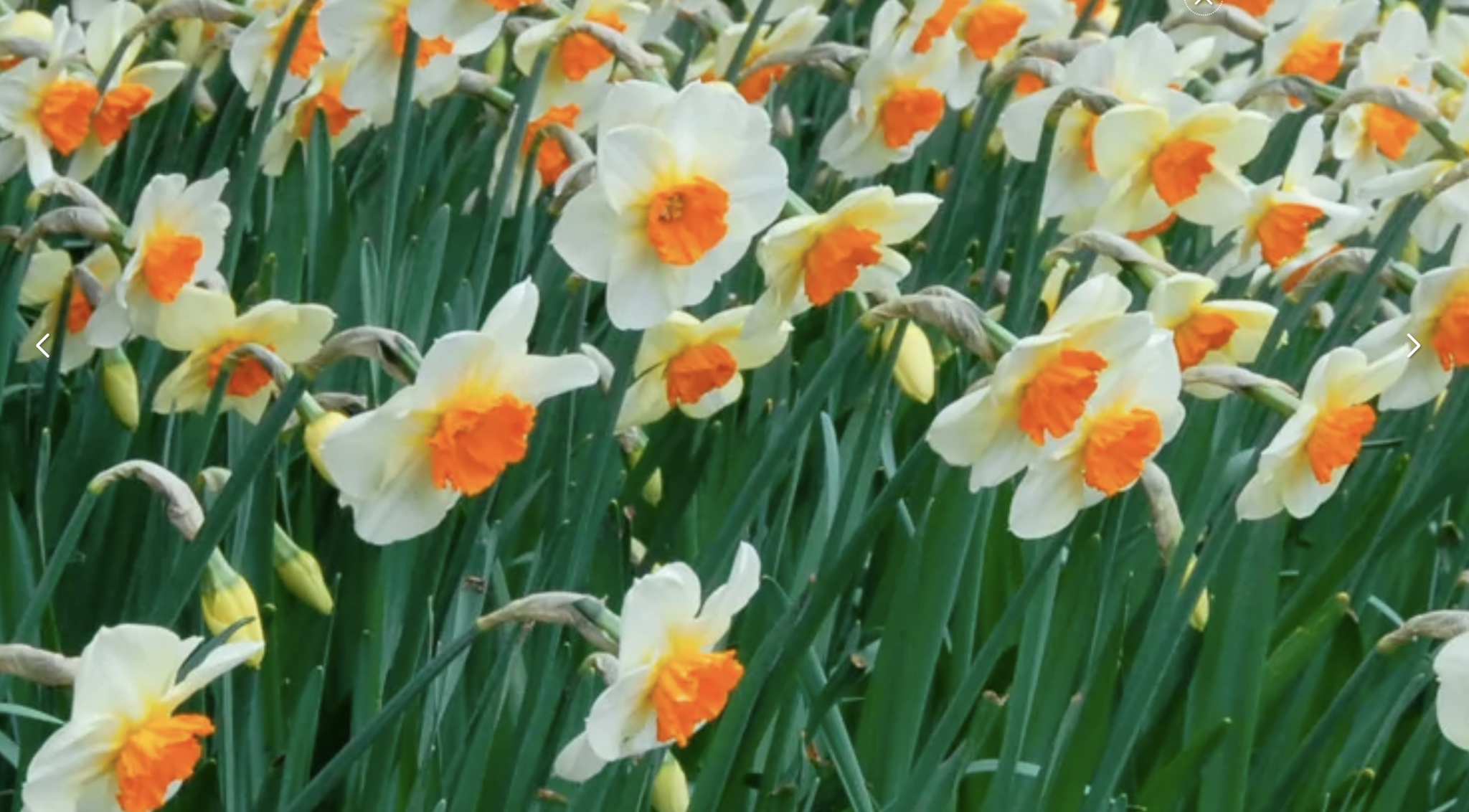 | - ‘Tahiti’ is a stunner with layers of rounded, golden yellow petals are interspersed with frilly, red-orange accents. They bloom mid to late season, last longer, and make an excellent cut flower.
| 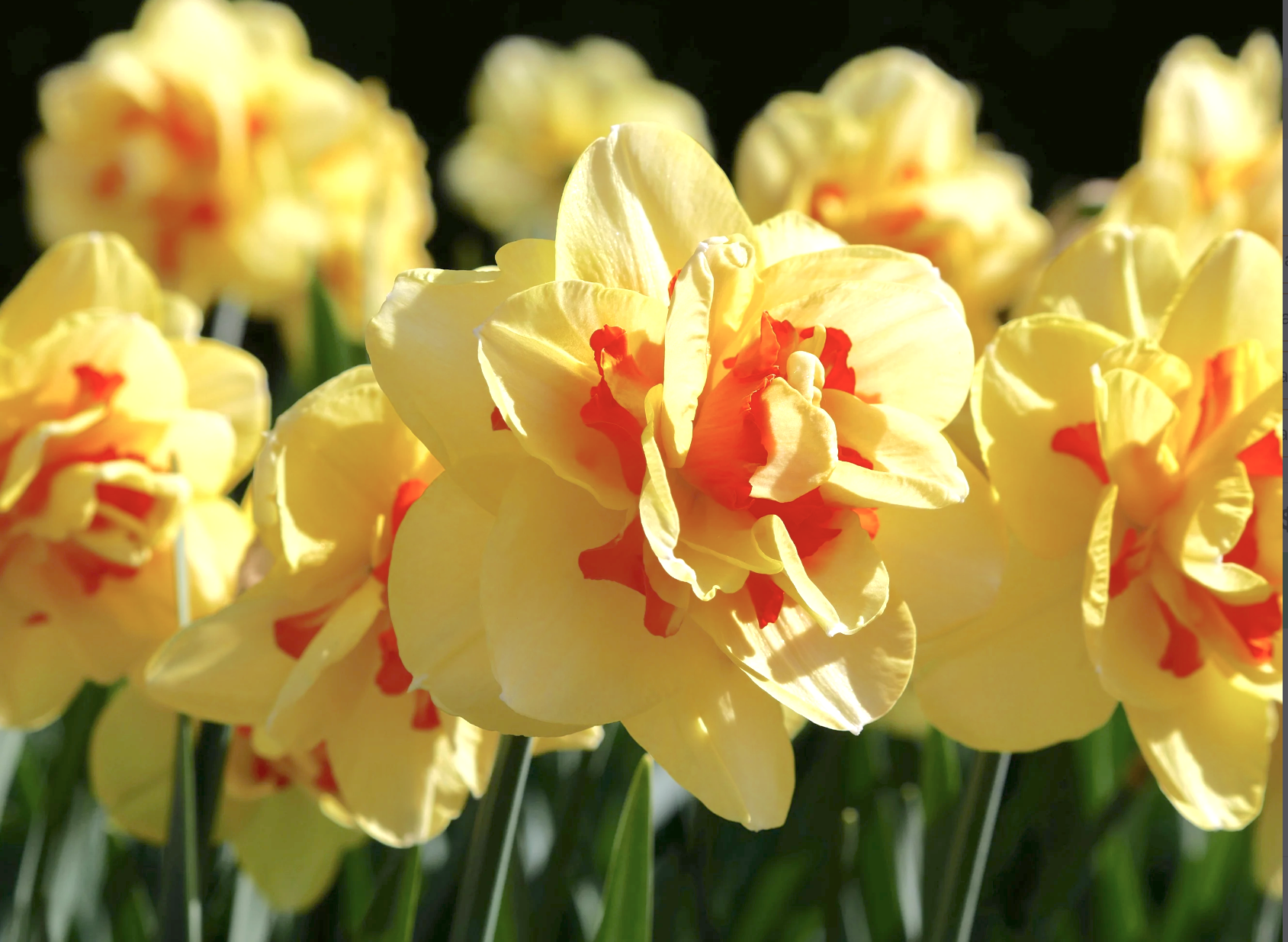 | - ‘Tete a Tete’ is an adorable mini daffodil which blooms early and blooms for weeks as one of the most long-blooming varieties. Ideal for flower beds and container, and naturalizes with ease.
| 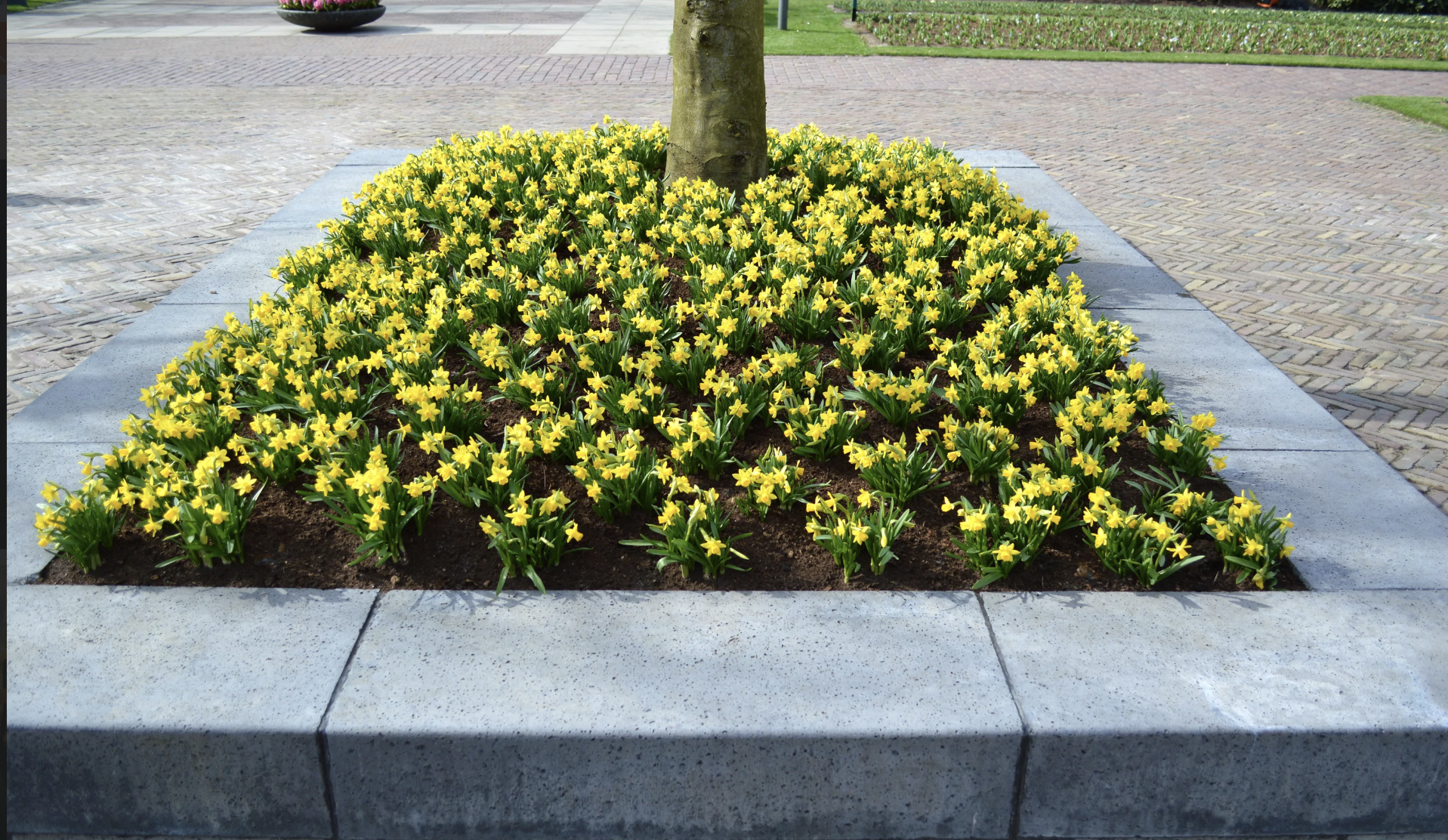 | - ‘Jetfire’ is another mini daffodil with bright orange cups and swept-back yellow petals. It blooms in early spring, very long-lasting, and doesn’t flop over.
| 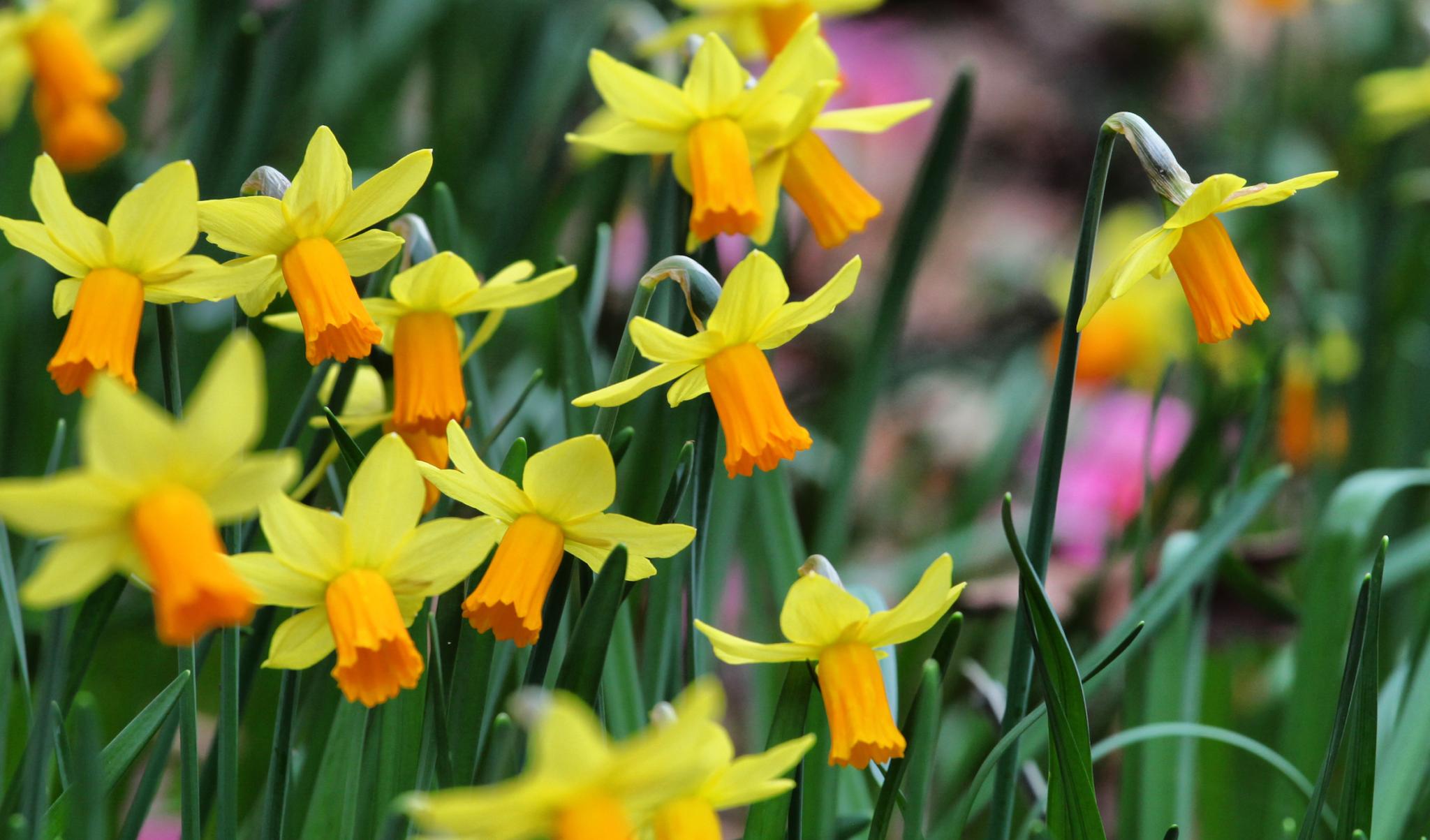 | - ‘Petit Four’ is a good choice for a partially shady site. The flower has white petals with a double cup of apricot pink and grows 16 inches tall
- ‘Cheerfulness’ bears double flowers and multiple blooms per stem, this daffodil is very fragrant with a lovely gardenia-like scent. Blooms in late spring and makes a great cut flower.
See pictures of these varieties and many more! | | Using Daffodils as Cut Flowers | | - When cut, daffodils should be kept alone in a vase, as their stems secrete a fluid that promotes the wilting of other flowers. If you must combine them, soak them by themselves for as long as possible, then rinse them and add them to the arrangement last. Learn more about keeping cut flowers fresh.
- Note that contact with the sap of daffodils may irritate skin or aggravate skin allergies.
| | Wit and Wisdom | | Here’s some daffodil-themed prose to brighten your day:
Daffodowndilly
She wore her yellow sun-bonnet,
She wore her greenest gown;
She turned to the south wind
And curtsied up and down.
She turned to the sunlight
And shook her yellow head,
And whispered to her neighbor:
“Winter is dead.”
–A.A. Milne, When We Were Very Young Daffodils,
That come before the swallow dares, and take
The winds of March with beauty.
–William Shakespeare, The Winter’s Tale I wandered lonely as a cloud
That floats on high o’er vales and hills,
When all at once I saw a crowd,
A host, of golden daffodils;
Beside the lake, beneath the trees,
Fluttering and dancing in the breeze.
–William Wordsworth, I Wander’d Lonely as a Cloud Of Spring Weather:
Chillier, but daffodillier.
–The 1991 Old Farmer’s Almanac | | Pests and Diseases - Daffodils are both deer-resistant and rodent-proof, as these animals do not like the taste of the bulbs in the Narcissus family.
- Daffodils can also be toxic to pets, so make sure your animals don’t munch on them.
- The most common problems include large narcissus bulb fly, bulb scale mite, narcissus nematode, slugs, narcissus basal rot and other fungal infections, and viruses.
| | | | | You received this email because you signed for updates from The Old Farmer's Almanac.
If you do not wish to receive our regular e-mail newsletter in the future,
please click here to manage preferences.
*Please do not reply to this e-mail*
© 2022 Yankee Publishing Inc. An Employee-Owned Company
1121 Main Street | P.O. Box 520 | Dublin, NH 03444
Contact Us
View web version | | | | |










No comments:
Post a Comment